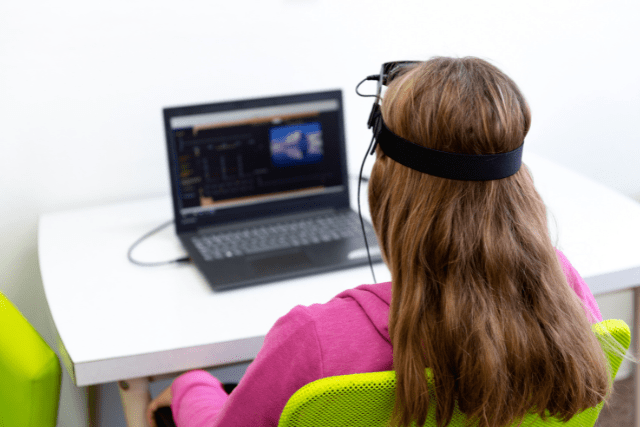Biofeedback therapy is a non-invasive, drug-free treatment that has been gaining popularity recently for its ability to help individuals manage various health conditions.
By harnessing the power of the mind-body connection, biofeedback therapy enables patients to take control of their healing process.
In this comprehensive guide, we will delve into the world of biofeedback therapy, exploring its history, benefits, and applications, as well as providing tips on how to get started with this innovative treatment.
What is Biofeedback Therapy?
Biofeedback therapy is a technique that teaches individuals how to control their physiological functions, such as heart rate, muscle tension, and skin temperature, through the use of specialized equipment and guided training.
Patients can improve their overall health and well-being by learning to recognize and modify these bodily responses.
A Brief History of Biofeedback Therapy
Biofeedback can be traced back to the early 20th century when researchers began to explore the relationship between the mind and body. However, it wasn’t until the 1960s and 1970s that biofeedback therapy gained widespread recognition as a viable treatment option.
Pioneers in the field, such as Dr. Neal Miller and Dr. Elmer Green, conducted groundbreaking research demonstrating biofeedback therapy’s potential for managing various health conditions.

Related Works
Biofeedback therapy is a treatment approach that utilizes electronic devices to provide individuals with real-time information about their physiological processes, such as heart rate, blood pressure, and muscle tension, to help them learn to control these processes.
It has been used in various medical conditions, including Attention Deficit Hyperactivity Disorder (ADHD), facial movement disorders, anorectal disorders, and stroke recovery.
In the context of ADHD, a meta-analysis of randomized controlled trials (RCTs) found that Electroencephalogram-neurofeedback (EEG-NF) significantly improved overall ADHD symptoms, inattention, and hyperactivity/impulsivity dimensions in children with ADHD (Micoulaud-Franchi et al., 2014).
However, the study highlighted the need for adequately blinded studies and careful control of EEG-NF protocols in future investigations (Micoulaud-Franchi et al., 2014). For facial movement disorders, biofeedback therapy has significantly improved in some studies, including case series and reports (Husseman & Mehta, 2008).
Similarly, biofeedback therapy is efficacious in treating anorectal disorders in improving rectal sensation and coordination of abdominal and pelvic floor muscles during evacuation (Patcharatrakul & Rao, 2018).
It has also improved lower limb activity after stroke and fecal incontinence when combined with electrical stimulation.
However, the effectiveness of biofeedback therapy for other conditions is less clear. While it has been found to reduce headache pain and provide benefits as adjunctive therapy for urinary incontinence after prostatectomy, the evidence for its effects on conditions such as bruxism, labour pain, and Raynaud’s is insufficient.
Additionally, biofeedback therapy is not beneficial for urinary incontinence in women or hypertension management (Kondo et al., 2019).
Despite its potential benefits, biofeedback therapy does have limitations. Standard office-based biofeedback therapy requires skilled staff, multiple visits, and limited availability at expert centres.
However, home biofeedback therapy has shown promise as an alternative, with similar efficacy in improving bowel symptoms and balloon expulsion compared to office-based therapy and being more cost-effective (Sharma et al., 2021).
Biofeedback therapy has shown effectiveness in improving symptoms and functioning in various medical conditions, including ADHD, facial movement disorders, anorectal disorders, and stroke recovery.
However, further research is needed to establish its efficacy in other conditions and to address methodological limitations in study design and implementation.
Home biofeedback therapy may offer a more accessible and cost-effective alternative to standard office-based therapy.
How Does Biofeedback Therapy Work?
During a biofeedback therapy session, sensors are attached to the patient’s skin to monitor specific physiological functions, such as heart rate, muscle tension, or skin temperature. This information is then displayed on a screen, allowing the patient to see their bodily responses in real time.
With the guidance of a trained biofeedback therapist, the patient learns to recognize and control these physiological functions through relaxation techniques, mental exercises, and visualization.
Over time, the patient becomes more adept at managing their bodily responses, leading to improved health outcomes.

The Benefits of Biofeedback Therapy
Biofeedback therapy is effective in treating a wide range of health conditions, including:
- Stress and anxiety: By teaching patients how to recognize and control their stress response, biofeedback therapy can help reduce anxiety and promote relaxation.
- Chronic pain: Biofeedback therapy can help patients manage pain by teaching them how to control muscle tension and other physiological responses contributing to discomfort.
- Migraines and tension headaches: Through relaxation techniques and stress management, biofeedback therapy can help reduce the frequency and severity of migraines and tension headaches.
- High blood pressure: By promoting relaxation and stress reduction, biofeedback therapy can help lower blood pressure in some individuals.
- Insomnia: Biofeedback therapy can help improve sleep quality by teaching patients how to regulate their physiological responses and promote relaxation.
- Irritable bowel syndrome (IBS): Biofeedback therapy effectively reduces the severity of IBS symptoms by teaching patients how to control their gut function.
Getting Started with Biofeedback Therapy
If you’re interested in exploring biofeedback therapy as a treatment option, follow these steps:
- Consult with your healthcare provider: Discuss your interest in biofeedback therapy with your doctor to determine if it’s an appropriate treatment option for your health.
- Find a qualified biofeedback therapist: Look for a certified therapist who has completed training through a reputable organization, such as the Biofeedback Certification International Alliance (BCIA).
- Attend an initial assessment: During your first session, the biofeedback therapist will assess your needs and develop a personalized treatment plan.
- Participate in regular biofeedback therapy sessions: Most treatment plans involve multiple sessions, typically ranging from 6 to 20, depending on the individual’s needs and progress.
- Practice at home: To maximize the benefits of biofeedback therapy, it’s essential to practice the techniques you learn during your sessions at home.
The Importance of a Holistic Approach
Athletes, musicians, and others seeking to enhance their performance can also benefit from biofeedback therapy.
By learning to control their physiological responses, such as heart rate and muscle tension, individuals can achieve greater focus, relaxation, and mental resilience, improving performance in their chosen field.
While biofeedback therapy can be an effective treatment option for various health conditions, it’s essential to remember that it’s not a one-size-fits-all solution.
A holistic approach incorporating other treatments, such as medication, psychotherapy, and lifestyle changes, may be necessary to achieve optimal health outcomes. Always consult your healthcare provider to determine the best treatment plan for your needs.
Conclusion
Biofeedback therapy offers a unique and empowering approach to managing various health conditions by tapping into the power of the mind-body connection.
With its non-invasive, drug-free nature, biofeedback therapy is an attractive option for those seeking alternative or complementary treatments.
By working closely with a certified biofeedback therapist and committing to regular practice, you can unlock the potential of this innovative therapy and take control of your healing journey.















Leave a Reply